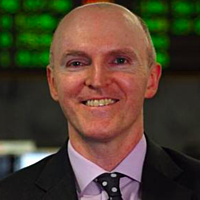RBA jitters still weighing on the Aussie

Westpac Bank
Former British Prime Minister Theresa May’s various Brexit plans and parliamentary votes were naturally of great interest to UK markets. But for the most part, the impact on global sentiment was limited. This month’s developments under PM Boris Johnson however look to be a lot more influential globally.
Global risk appetite improved sharply in line with the British pound on October 15th, when newswires reported that EU and UK negotiators had made a breakthrough in negotiations. Along with US equities, the 10 year Treasury yield bounced and has not revisited the lows prior to the Brexit headlines.
While this week the UK Parliament voted for more time rather than acceding to Johnson’s scramble to leave by Halloween, the key for global markets is that a no-deal Brexit appears to be very unlikely.
The latest Bank of England estimates are that a no-deal Brexit would cut GDP by 5-6% and send unemployment to 7%. The impact on global confidence is impossible to estimate, but suffice to say that concern over a hard Brexit has been a factor worrying central banks such as the ECB, Fed and RBA for some time.
Even with the reduced risks over Brexit and a more positive mood around US-China trade relations, the FOMC still seems set to cut its funds rate to 1.50-1.75% on Wednesday, most likely placing much of the blame for a cooler outlook on the global economy and geopolitical risks.
So too the Bank of Japan is set to ease policy even further next week, also worried about global risks, as was the ECB this week as it justified its resumption of bond purchases from November. Perhaps the best of the Brexit-led risk rally is already behind us.
Indeed the Aussie dollar has lost considerable momentum over the week. After reaching one month highs above 0.6880 on Tuesday, the Aussie failed to break 69 cents and slid back to just above 68 cents on Friday. One factor may have been concern over US-China relations as US vice president Mike Pence attacked China in a keynote speech in Washington.
There could also be some positioning for further RBA easing steps in coming months. Pricing for the RBA to cut the cash rate again before year-end is about 65%. This seems a little high given Governor Lowe’s optimism on Australia’s growth outlook, the Brexit breakthrough and a possible US-China trade agreement next month.
There is likely to be some nervousness over Australia’s Q3 CPI data, which dominates the local calendar in the week ahead. Westpac looks for overall inflation to be up 1.8% over the year, the 5th consecutive quarter of inflation below the bottom of the RBA’s 2 to 3% target band.
But more importantly for markets, we look for a low 0.3% quarterly rise in underlying inflation, for an annual rate of just 1.5%. Such a reading should ensure that markets continue to discuss when the RBA might cut rates again, keeping the pressure on the Aussie dollar.
1 topic

Sean Callow is Westpac Bank's Senior Currency Strategist, based in Sydney. Sean focuses on the Australian dollar and other G10 and Asian currencies. He has worked in strategy and economics roles in New York, London, Singapore and Melbourne.
Expertise

Sean Callow is Westpac Bank's Senior Currency Strategist, based in Sydney. Sean focuses on the Australian dollar and other G10 and Asian currencies. He has worked in strategy and economics roles in New York, London, Singapore and Melbourne.
